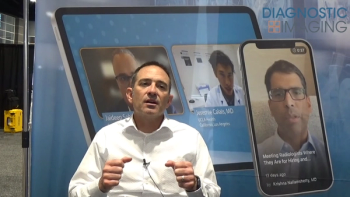
Asymptomatic young tennis players harbor MSK trauma
The competition is fierce on the way to Wimbledon-just how fierce has been elucidated by British researchers who found a significant number of spinal abnormalities in otherwise healthy adolescent tennis players.
The competition is fierce on the way to Wimbledon-just how fierce has been elucidated by British researchers who found a significant number of spinal abnormalities in otherwise healthy adolescent tennis players.
Researchers from the Royal National Orthopaedic Hospital in Middlesex and the Lawn Tennis Association in London used MRI to take a "snapshot" of the spines of some of the junior elite tennis players coming into the program at 16 years of age and some of the older players, up to 23 years old, already on full-time performance programs.
MRI revealed lumbar spinal problems in 28 of 33 elite tennis players, all but one asymptomatic. Injuries included spinal disc degeneration, herniated discs, complete fractures, and stress fractures known as pars lesions. Researchers also found 23 subjects with early signs of arthropathy in the facet joints, nine of which had moderate permanent degeneration (Br J Sports Med 2007, published online July 19).
The study, sponsored by the Lawn Tennis Association, was designed to be longitudinal and document spinal changes over a 10-year period. But the number and degree of injuries in such young subjects amazed the investigators.
"The very high incidence of abnormalities has come as something of a surprise in the teenage group, particularly as they were all asymptomatic," said coauthor Dr. Michael Turner, medical director for the Lawn Tennis Association. "We intend to look at the younger players, aged 12 to 15 years, to try and find an age at which the MRIs are normal. This will enable us to look at the training and coaching patterns during the phase at which these abnormalities seem to occur."
Although not mentioned in the paper, researchers spent a lot of time discussing the results with the players and their parents, and they were all unable to come up with a significant past injury or period of tennis that would indicate when the numerous pars defects occurred, according to Turner.
"Something I find quite astounding-the silent adolescent pars fracture," he said.
These aspiring tennis pros spend large amounts of time training to improve their performance during their growth-spurt years. The regimen involves repeated rapid twists and hyperextension of the lower spine, according to senior author Dr. David Connell, a musculoskeletal radiologist at the Royal National Orthopaedic Hospital. He stressed that exercise routines should be revised to include more strength and fitness work and less actual tennis play.
While it may be a bit premature to link training with abnormalities, especially in the absence of a control group, Connell pointed out that these findings are not prevalent in the normal population.
Dr. William Morrison, chief of musculoskeletal radiology at Thomas Jefferson University Hospital in Philadelphia, said he sees many such injuries with MRI in young asymptomatic athletes, and screening those with "high expectations" might make sense. The Lawn Tennis Association offers routine MRI screening to all junior elite players, but it is a voluntary program and does not include players who are under 16. The cost of a lumbar MRI in London is between $900 and $1200, and the number of tennis players involved in the association's programs tops 1000.
"The possibility of screening every junior tennis player annually from the age of 12 is simply not an option," Turner said.
Newsletter
Stay at the forefront of radiology with the Diagnostic Imaging newsletter, delivering the latest news, clinical insights, and imaging advancements for today’s radiologists.




























